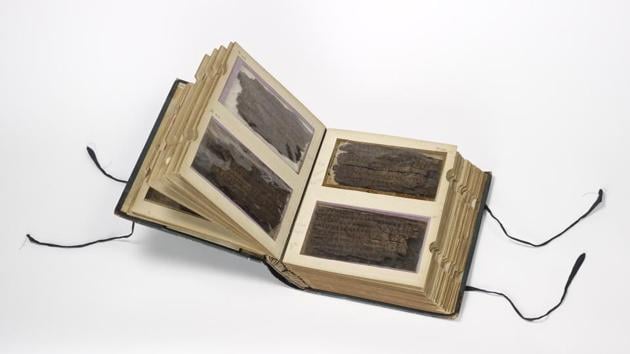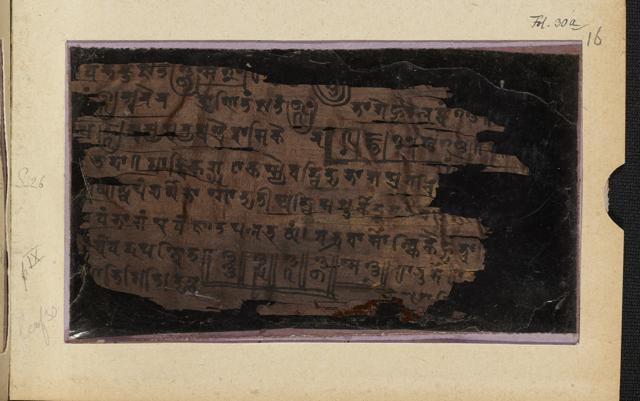Oldest recorded zero in Indian text is centuries older than initially thought
The surprising results of the first ever radiocarbon dating on the Bakhshali manuscript, which contains hundreds of zeroes, reveals that it dates from as early as the third or fourth century, some five centuries older than previously believed.
The idea of ‘zero’ – crucial to mathematics and all calculations – is widely believed to have originated in India, but carbon dating at the University of Oxford has now proved that an Indian text mentioned it as early as the third or fourth century – much earlier than thought.

Considered the oldest recorded origin of ‘zero’, its mention in the Bakhshali manuscript dates it to a period hundreds of years than previously thought. It was found in 1881 in a field in Bakhshali village near Peshawar, and has been in the Bodleian Library of Oxford since 1902.
The library said on Thursday that the surprising results of the first ever radiocarbon dating on the Bakhshali manuscript which contains hundreds of zeroes reveals that it dates from as early as the third or fourth century – approximately five centuries older than scholars had previously believed.

This means that the manuscript in fact predates a ninth century inscription of zero on the wall of a temple in Gwalior, which was previously considered to be the oldest recorded example of a zero used as a placeholder in India. The findings are highly significant for the study of the early history of mathematics, it said.
“The zero symbol that we use today evolved from a dot that was used in ancient India and can be seen throughout the Bakhshali manuscript. The dot was originally used as a ‘placeholder’, meaning it was used to indicate orders of magnitude in a number system – for example, denoting 10s, 100s and 1000s”, the library said.
While the use of zero as a placeholder was seen in several different ancient cultures, such as among the ancient Mayans and Babylonians, the symbol in the Bakhshali manuscript is considered particularly significant for two reasons. First, it is this dot that evolved to have a hollow centre and became the symbol that we use as zero today. Secondly, it was only in India that this zero developed into a number in its own right, hence creating the concept and the number zero that we understand today.
This happened in 628 AD, just a few centuries after the Bakhshali manuscript was produced, when the Indian astronomer and mathematician Brahmagupta wrote a text called Brahmasphutasiddhanta, which is the first document to discuss zero as a number.
The document will be displayed in the ‘Illuminating India: 5000 Years of Science' exhibition at the Science Museum in London from October 4. It is part of a season of exhibitions and events that celebrates India’s contribution to science, technology and mathematics.
Although the Bakhshali manuscript is widely acknowledged as the oldest Indian mathematical text, the exact age of the manuscript has long been the subject of academic debate. The most authoritative academic study on the manuscript, conducted by Japanese scholar Hayashi Takao, asserted that it probably dated from between the eighth and the 12th century, based on factors such as the style of writing and the literary and mathematical content.
The new carbon dating reveals that the reason why it was previously so difficult for scholars to pinpoint the Bakhshali manuscript’s date is because the manuscript, which consists of 70 fragile leaves of birch bark, is in fact composed of material from at least three different periods.
Marcus du Sautoy, professor of Mathematics at the University of Oxford, said: “Today we take it for granted that the concept of zero is used across the globe and is a key building block of the digital world. But the creation of zero as a number in its own right, which evolved from the placeholder dot symbol found in the Bakhshali manuscript, was one of the greatest breakthroughs in the history of mathematics”.
“We now know that it was as early as the third century that mathematicians in India planted the seed of the idea that would later become so fundamental to the modern world. The findings show how vibrant mathematics have been in the Indian subcontinent for centuries.”




